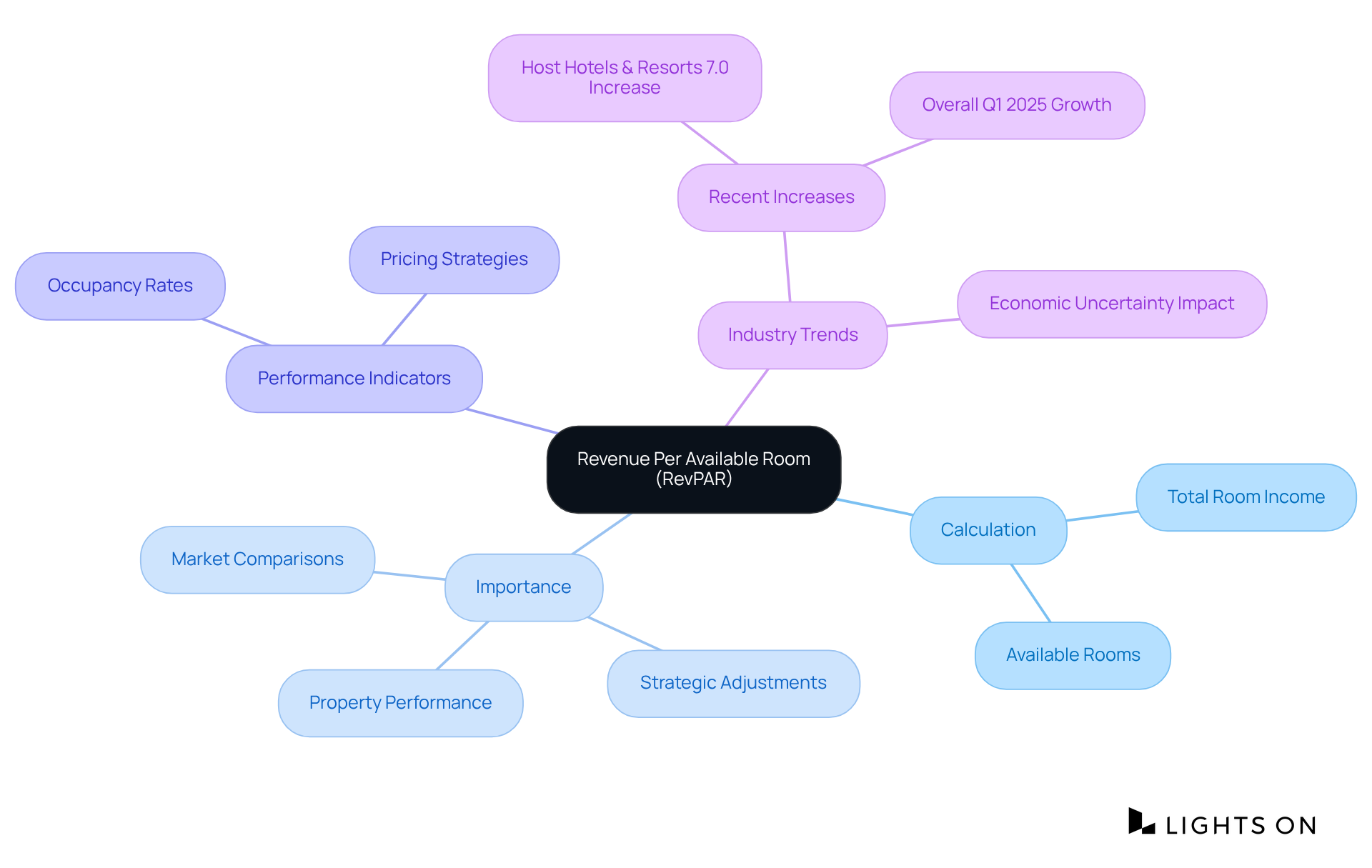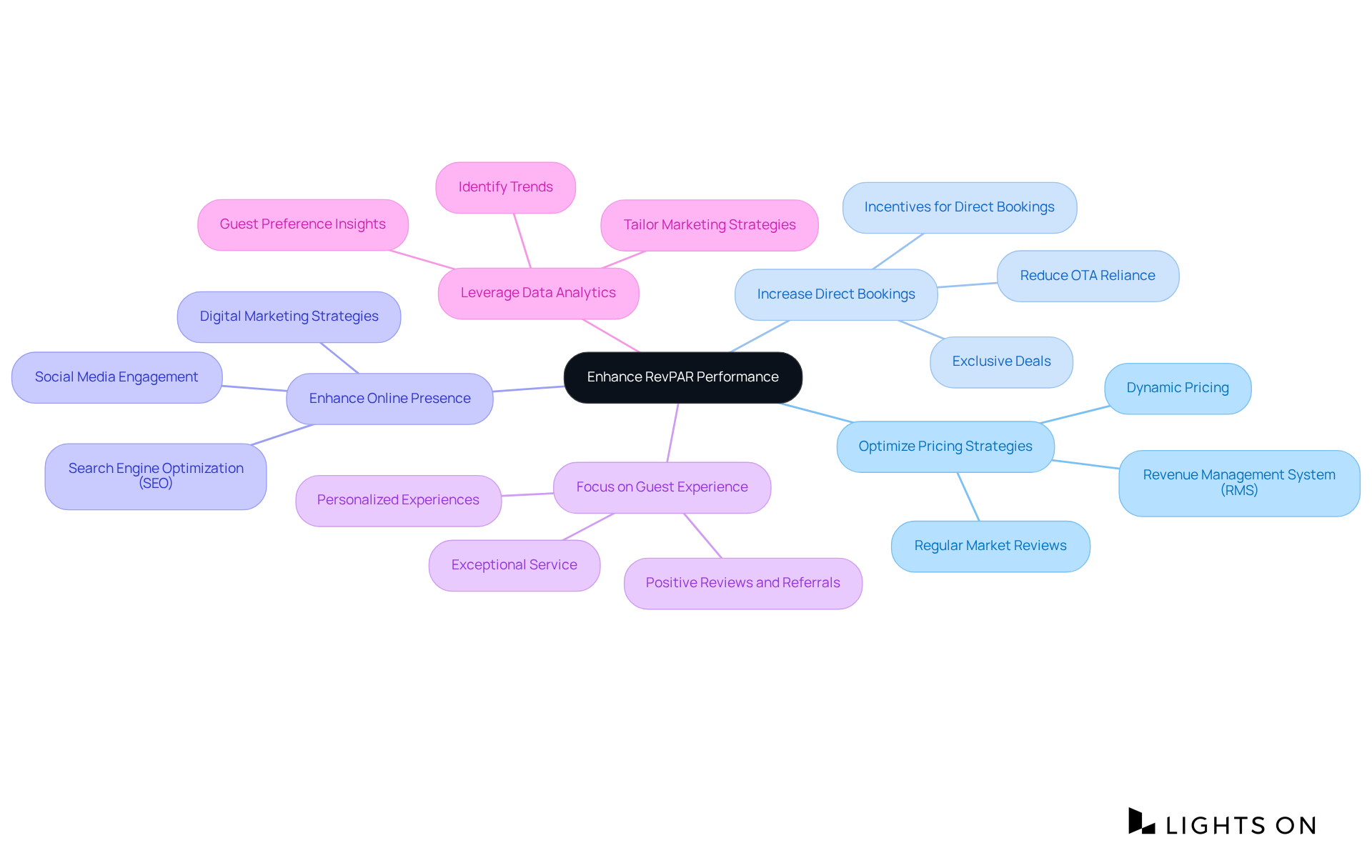The article serves as a comprehensive guide on calculating Revenue Per Available Room (RevPAR), underscoring its critical role for hotel owners in evaluating financial performance and executing effective revenue management strategies.
It delineates the calculation process and provides valuable insights into optimizing pricing and enhancing guest experiences.
Furthermore, it highlights the necessity of leveraging data analytics to elevate RevPAR, thereby empowering hotel owners to fortify their market position and profitability.
Understanding the financial health of a hotel is crucial for success in the competitive hospitality industry. Revenue Per Available Room (RevPAR) is a key indicator of a property's performance, offering insights into how effectively a hotel generates income from its available accommodations. However, many hotel owners face challenges in accurately calculating this vital metric.
What strategies can be employed to grasp the intricacies of RevPAR and leverage it to enhance profitability and market position? This guide delves into the steps for calculating RevPAR and presents actionable strategies for improvement, ensuring that hotel owners are equipped to navigate the complexities of revenue management.
Revenue Per Available Accommodation (RevPAR) stands as a pivotal metric in the hospitality sector, measuring a property's income-generating effectiveness from its available spaces. This figure illustrates how to calculate RevPAR by dividing total room income by the number of available rooms over a specified period. For lodging proprietors, understanding how to calculate RevPAR is essential, as it provides critical insights into property performance in relation to occupancy rates and pricing strategies. An upward trend in revenue per available room signifies effective revenue management practices, whereas a decline may indicate the necessity for strategic adjustments.
Understanding revenue per available room not only aids in but also facilitates comparisons with competitors, making it an indispensable tool for informed decision-making. Recent trends reveal that the majority of accommodation providers reported higher revenue per available room in Q1 2025, with Host Hotels & Resorts specifically noting a 7.0% increase in comparable lodging revenue per available room. This underscores the importance of strategic portfolio reinvestment and market responsiveness in enhancing financial performance.
Industry specialists emphasize that revenue per available room transcends mere numbers; it encapsulates the efficiency of a lodging establishment's marketing and operational strategies. As the hospitality landscape evolves, staying attuned to revenue per available room trends—particularly those shaped by advanced revenue management techniques such as pricing optimization and demand generation—enables hotel owners to tackle challenges and seize opportunities, ultimately bolstering their financial performance. Moreover, amidst persistent economic uncertainty, comprehending these dynamics becomes increasingly vital for long-term success.

It is essential to understand how to calculate revpar in order to assess your property's financial performance. To begin, determine your total accommodation revenue by collecting the income generated from accommodation sales during a specific period. For instance, if your establishment earned $50,000 from bookings in a month, this figure represents your total accommodation revenue.
Next, identify your total available spaces. This involves calculating the total number of accommodations available for sale during the same period. If your hotel has 100 rooms and they were available for 30 days, the total available rooms would be 100 x 30 = 3,000.
To understand how to calculate revpar, utilize the formula:
In this example, revenue per available room equals $50,000 / 3,000 = $16.67. Alternatively, Revenue Per Available Room can also be calculated using the formula
For example, if your ADR is $100 and your occupancy rate is 70%, then revenue per available room equals $100 x 0.70 = $70.
Mastering how to calculate revpar provides property owners with valuable insights into their earnings performance. Understanding revenue per available room is crucial, as it not only indicates the effectiveness of pricing strategies but also aids in benchmarking against competitors. An accommodation with an Index score of 100 reflects performance equal to its competitive group, while a score under 100 suggests potential revenue enhancement opportunities. With the global accommodation hovering around 66%, optimizing revenue per available room can significantly enhance profitability and market positioning.
It is important to recognize that while revenue per available room is a key metric, it does not account for costs per occupied room (CPOR) or additional income generated from other departments. Therefore, hotel owners should consider these factors when evaluating their overall financial performance. Furthermore, comprehending demand trends is vital for executing strategic pricing strategies that can enhance revenue per available room. For those seeking to simplify their calculations, a complimentary calculator worksheet is available to assist in organizing data and executing these calculations effectively.

To enhance your RevPAR performance, consider implementing the following strategies:
By implementing these strategies, hotel owners can effectively learn how to calculate RevPAR, which will lead to improved financial performance and a stronger competitive position in the market.

Revenue per Available Room (RevPAR) stands as a pivotal metric for hotel owners, encapsulating the financial health of their properties through a straightforward calculation. By mastering this essential indicator, hotel proprietors can glean insights into their operational effectiveness, enabling informed decision-making that drives profitability. Understanding RevPAR not only aids in evaluating performance but also underscores the necessity of strategic adjustments in response to evolving market dynamics.
This article delineates the crucial steps for calculating RevPAR, emphasizing the significance of both total accommodation revenue and available rooms. Key strategies for enhancing RevPAR encompass:
These insights highlight the multifaceted approach required to elevate financial performance within the competitive hospitality landscape.
Ultimately, the effective management of RevPAR is vital for sustained success in the hospitality industry. By adopting the strategies discussed, hotel owners can not only enhance their RevPAR but also position themselves advantageously against competitors. Embracing these practices will ensure that properties remain resilient and profitable, even amidst fluctuating market conditions.
What does RevPAR stand for and why is it important in hospitality?
RevPAR stands for Revenue Per Available Accommodation. It is an important metric in the hospitality sector as it measures a property's income-generating effectiveness from its available spaces.
How is RevPAR calculated?
RevPAR is calculated by dividing total room income by the number of available rooms over a specified period.
Why is it essential for lodging proprietors to understand how to calculate RevPAR?
Understanding how to calculate RevPAR is essential for lodging proprietors because it provides critical insights into property performance in relation to occupancy rates and pricing strategies.
What does an upward trend in RevPAR indicate?
An upward trend in RevPAR signifies effective revenue management practices.
What might a decline in RevPAR suggest?
A decline in RevPAR may indicate the necessity for strategic adjustments in a lodging establishment's operations.
How does RevPAR assist in evaluating a lodging establishment's success?
RevPAR aids in evaluating operational success and facilitates comparisons with competitors, making it an indispensable tool for informed decision-making.
What recent trend was observed in RevPAR for accommodation providers in Q1 2025?
The majority of accommodation providers reported higher revenue per available room in Q1 2025, with Host Hotels & Resorts noting a 7.0% increase in comparable lodging revenue per available room.
What factors contribute to enhancing financial performance related to RevPAR?
Strategic portfolio reinvestment and market responsiveness contribute to enhancing financial performance related to RevPAR.
How does RevPAR relate to marketing and operational strategies?
Revenue per available room transcends mere numbers; it encapsulates the efficiency of a lodging establishment's marketing and operational strategies.
Why is it increasingly vital to understand RevPAR dynamics amidst economic uncertainty?
Comprehending RevPAR dynamics becomes increasingly vital for long-term success, especially in the face of persistent economic uncertainty, as it helps hotel owners tackle challenges and seize opportunities.
Transform your group booking strategies with Lights On and watch your occupancy soar.